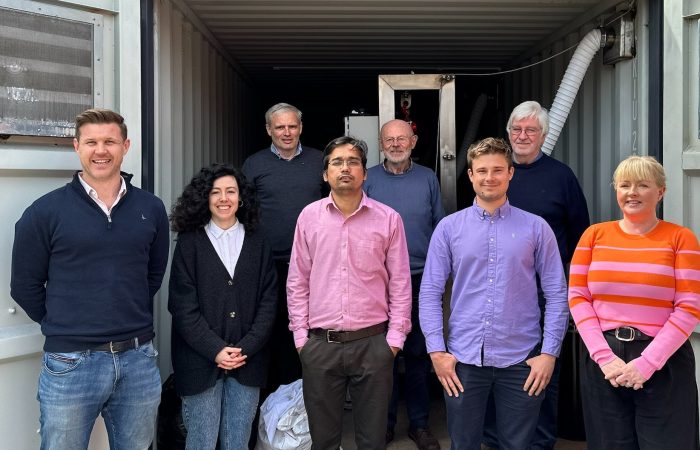NEG8 Carbon Achieves Landmark Success: Our Prototype Direct Air Capture Unit Successfully Captures 1.2 Tonne of CO2 Annually
30 August 2023: We are excited to announce that our recent testing of our pilot Direct Air Capture (DAC) unit has been a resounding success, capturing 1.2 tonne of CO2 in a year. This pivotal achievement propels us to a Technology Readiness Level (TRL) of 6, marking a significant stride in our journey to mitigate the harmful impacts of climate change.
Born out of Trinity College Dublin in 2014 and research conducted in University College Dublin, NEG8 Carbon has been on a dedicated quest to combat the effects of atmospheric CO2. Positioned at the forefront of innovation, our mission has always been clear: capture and reduce carbon emissions directly from the atmosphere. As the world grapples with the escalating impacts of global warming, our cutting-edge technology provides a potential solution underpinned by science and sustainable engineering.
Our CTO Dr. John Breen commented:
“Our successful pilot test at NEG8 Carbon Labs in Waterford is but a precursor to our grand vision. We are currently in the development phase of units designed to capture 400 tonnes of CO2 annually at a low cost. These units are modular, allowing us to effectively create arrays that can capture millions of tonnes of carbon dioxide”.
Considering the recent Intergovernmental Panel on Climate Change (IPCC) insights on the necessity of DAC for eradicating up to 40bn tonnes of CO2 annually, our pilot unit’s success couldn’t have come at a more critical time. Our end goal for Ireland is ambitious – capturing 10 million tonnes of CO2 annually within the next 10 to 15 years. This would amount to capturing 25% of Ireland’s current annual emissions.
Our Chief Commercial Officer, Adrian Costigan, spoke to our broader vision:
“With CO2 being the primary climate change driver, it’s imperative that we leverage Direct Air Capture technology to its full potential. However, the current capture costs need to be drastically reduced which will take time and investment. When our technology is scaled, we aim to attain a cost of removal of below €150 per tonne in 2035 and below €100 per tonne by 2045.”
We are grateful for the unwavering support of our partners, stakeholders, and the broader community. As we advance our technology, we remain committed to driving sustainability, nurturing innovation, and crafting a world where the atmosphere is restored, ecosystems flourish, and a sustainable future becomes a tangible reality.
Thank you for being part of our journey. Let’s continue to forge ahead, capturing a brighter, greener future for all.
For more:

